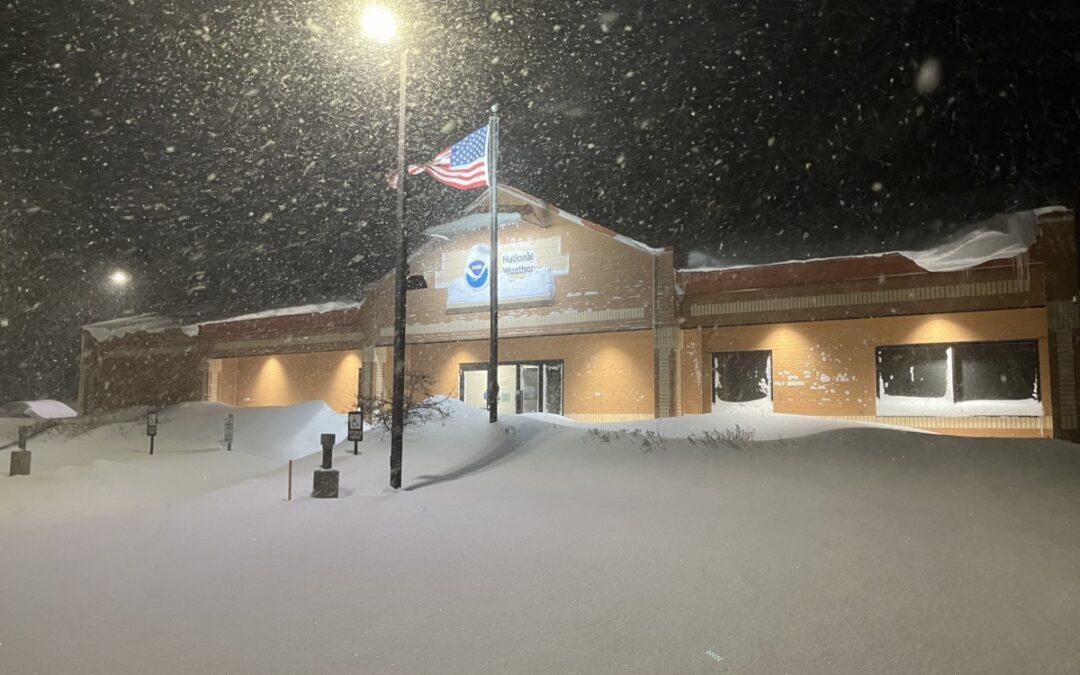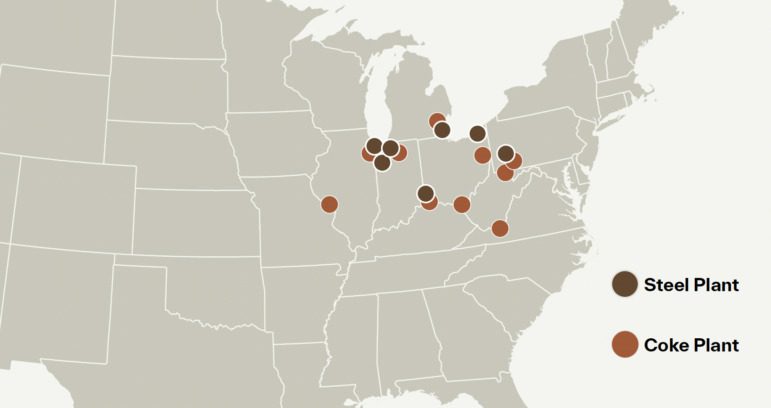
The Environmental Protection Agency announced its first-ever national standards for PFAS in drinking water. But lawmakers say Michigan is already ahead of the curve.
MICHIGAN—President Joe Biden’s administration this week finalized strict limits on so-called “forever chemicals” in drinking water, which are set to reduce them to the lowest level they can be reliably measured, curb exposure for 100 million people, and prevent thousands of illnesses.
And while the state of Michigan has had its own standards for toxic PFAS (or perfluoroalkyl and polyfluoroalkyl substances) in drinking water since 2020, the new federal rules mark the first-ever nationwide limit—which will soon apply to every public water system in the country.
During a press conference on Wednesday, US Rep. Elissa Slotkin (D-Michigan) labeled the new rules as “one of the biggest victories we’ve scored” in a decade-long fight to combat PFAS, which are widespread across the US, linked to cancer, and long lasting in the environment.
“Now, if you find PFAS in your water, no matter where you are, you have a nationwide standard, based on science, so you know water is safe,” Slotkin said. “And importantly, water systems across the country will be required to monitor for PFAS and bring it down to safe levels.”
PFAS is a broad family of chemical substances, and the new rule sets strict limits on several of the most common types. Those federal limits are stricter than state-level standards, but most of Michigan’s drinking water providers are already reportedly meeting the new federal benchmarks.
Environmental Protection Agency officials have said the new rule marks the most important action the federal government has taken on PFAS. They’ve also said the new rules will make tap water safer for millions of consumers—which is a top priority for the Biden administration.
“This is some bold action and very science-based, and they took their time and did it well,” said Sandy Wynn-Stelt, co-chair of the Great Lakes PFAS Action Network. “This has been a long journey—not just in our state, where we have made incredible progress, but also in our country.”
What are PFAS?
PFAS are a group of synthetic chemicals that were designed to repel oil and water, for temperature resistance and friction reduction for a wide range of consumer and industrial products—including as coatings for paper products and cookware and in firefighting foams.
Scientists have dubbed PFAS as “forever chemicals” because they take thousands of years to break down and can accumulate in soil, water, plants, animals, and people over time.
Research from Michigan State University Extension shows that the food supply is one of the many ways in which PFAS can spread to humans, who can then suffer from a variety of health complications—including low birth weight, liver disease, and certain types of cancers.
How bad is it?
Over the last year, the EPA has periodically released batches of utility test results for PFAS in drinking water. Roughly 16% of utilities found at least one of the two strictly limited PFAS chemicals at or above the new limits. These utilities serve tens of millions of people. The Biden administration, however, expects about 6-10% of water systems to exceed the new limits.
Michigan has been billed among the leading states in recognized PFAS contamination sites, which researchers have attributed, in part, to the state government’s comparatively aggressive approach toward testing and monitoring contamination sites. That includes seven state agencies coming together to form the Michigan PFAS Action Response Team in 2017.
State regulators are actively tracking at least 295 PFAS-contaminated sites across more than half of Michigan’s 83 counties—including at landfills, manufacturing facilities, airports, military bases, and other locations where the chemicals have been used or dumped since the 1940s.
State data shows the majority of those sites, so far, have been identified in Kent, Oakland, Kalamazoo, Muskegon, Wayne and Genesee counties—with each tracking at least a dozen contaminated properties. The sheer extent of the pollution has caused some researchers and activists to label the situation as Michigan’s biggest environmental crisis in at least 40 years.
What happens now?
Water providers will generally have three years to do testing. If those tests exceed the limits, they’ll have two more years to install treatment systems, according to EPA officials.
Some water utilities have already taken issue with the rule, saying treatment systems are expensive to install and that customers will end up paying more for water—particularly those living in smaller communities with fewer resources. Legal challenges are likely to follow.
Some funds are available to help utilities. Manufacturer 3M recently agreed to pay more than $10 billion to drinking water providers to settle PFAS litigation. Biden’s Bipartisan Infrastructure Law also includes billions more to combat the substance, but utilities say more will be needed.
Slotkin said Congress still has “more work to do,” including by focusing on ways to provide federal resources (and funding) to help smaller communities clean up PFAS contamination.
“We know that with the new standards, lots of people are going to be looking (for PFAS) and lots of communities are going to find that water—particularly outside of Michigan where they haven’t had state standards,” Slotkin said. “They’re going to want help and the federal government needs to do work to appropriate the funds so that people can get the cleanup they deserve.”
“It takes a village. It takes legislators and activists. It takes people at the local level, the federal level. It takes an administration who wants to do something about drinking water standards. It takes a ton of people to get this done.” Slotkin added. “It’s difficult to overstate the significance. The job is not done, but it is a really important chapter in the book on PFAS and cleaning it up.”
The Associated Press contributed to this report.
READ MORE: Farmers call for federal ‘safety net’ after PFAS sinks Michigan cattle farm
For the latest Michigan news, follow The ‘Gander on Twitter.
Follow Political Correspondent Kyle Kaminski here.
Support Our Cause
Thank you for taking the time to read our work. Before you go, we hope you'll consider supporting our values-driven journalism, which has always strived to make clear what's really at stake for Michiganders and our future.
Since day one, our goal here at The 'Gander has always been to empower people across the state with fact-based news and information. We believe that when people are armed with knowledge about what's happening in their local, state, and federal governments—including who is working on their behalf and who is actively trying to block efforts aimed at improving the daily lives of Michigan families—they will be inspired to become civically engaged.


State asks residents to prepare their homes for wildfires
By Kayte Marshall, Capital News Service LANSING – In Michigan, it only takes a sunny afternoon, a yard full of dead leaves and one bad decision to...

Budget cuts threaten Great Lakes weather forecasting
By Daniel Schoenherr, Capital News Service LANSING – Proposed federal budget cuts could cripple the ability of Michigan forecasters to monitor...

More goose poop, more problems
By Clara Lincolnhol, Capital News Service LANSING – Chris Compton, the owner of a company called Goose Busters, has spent nearly 30 years addressing...

A key to protecting apples from climate change might be hiding in Michigan’s forests
MICHIGAN—In the quest to make apple trees more resilient in a warming climate, some Michigan researchers are looking for a late bloomer. A native...

Great Lakes region hit hard by steel industry pollution, report finds
By Joshua Kim, Capital News Service LANSING – Pollution from coal-based steel production causes hundreds of premature deaths each year, with people...







